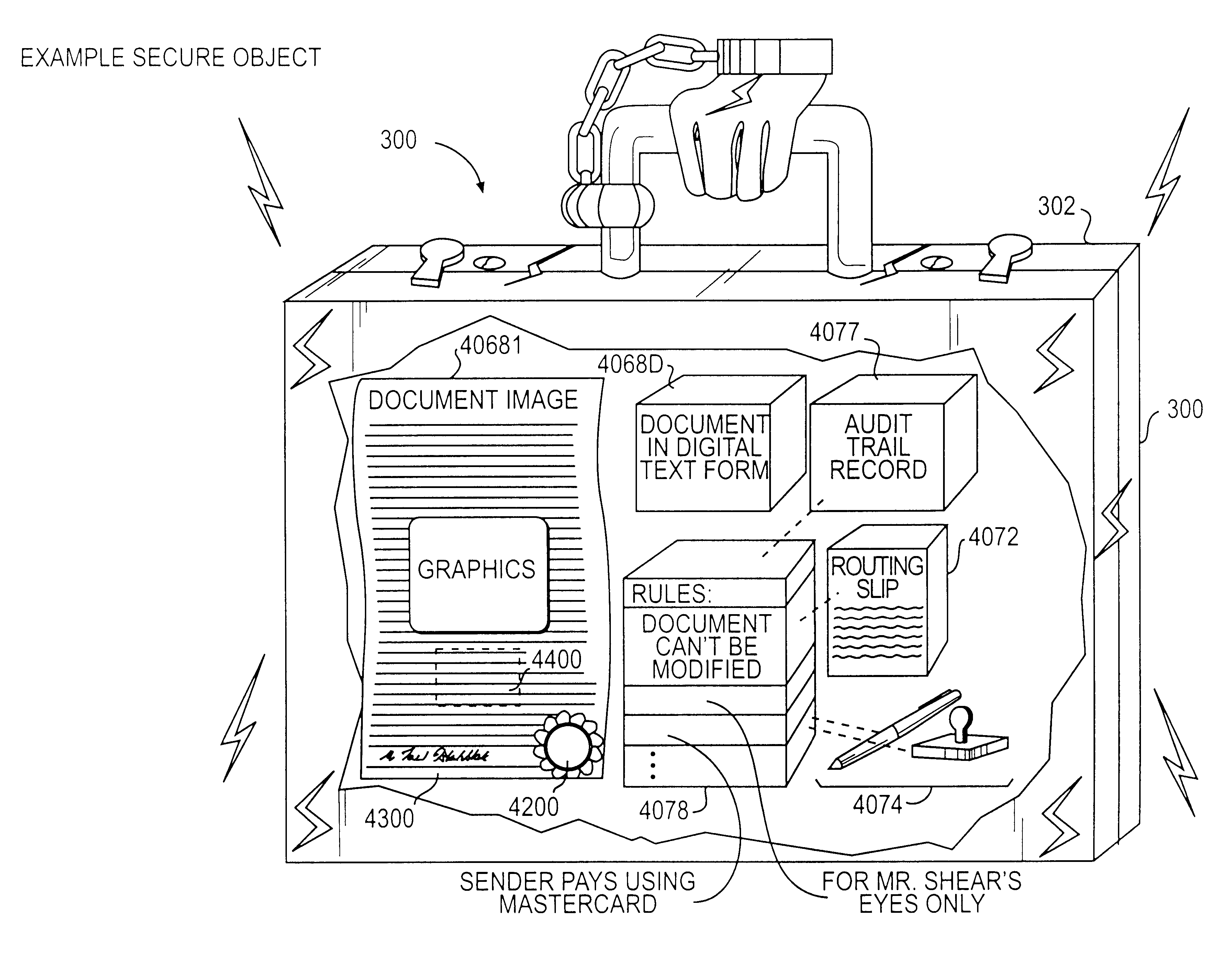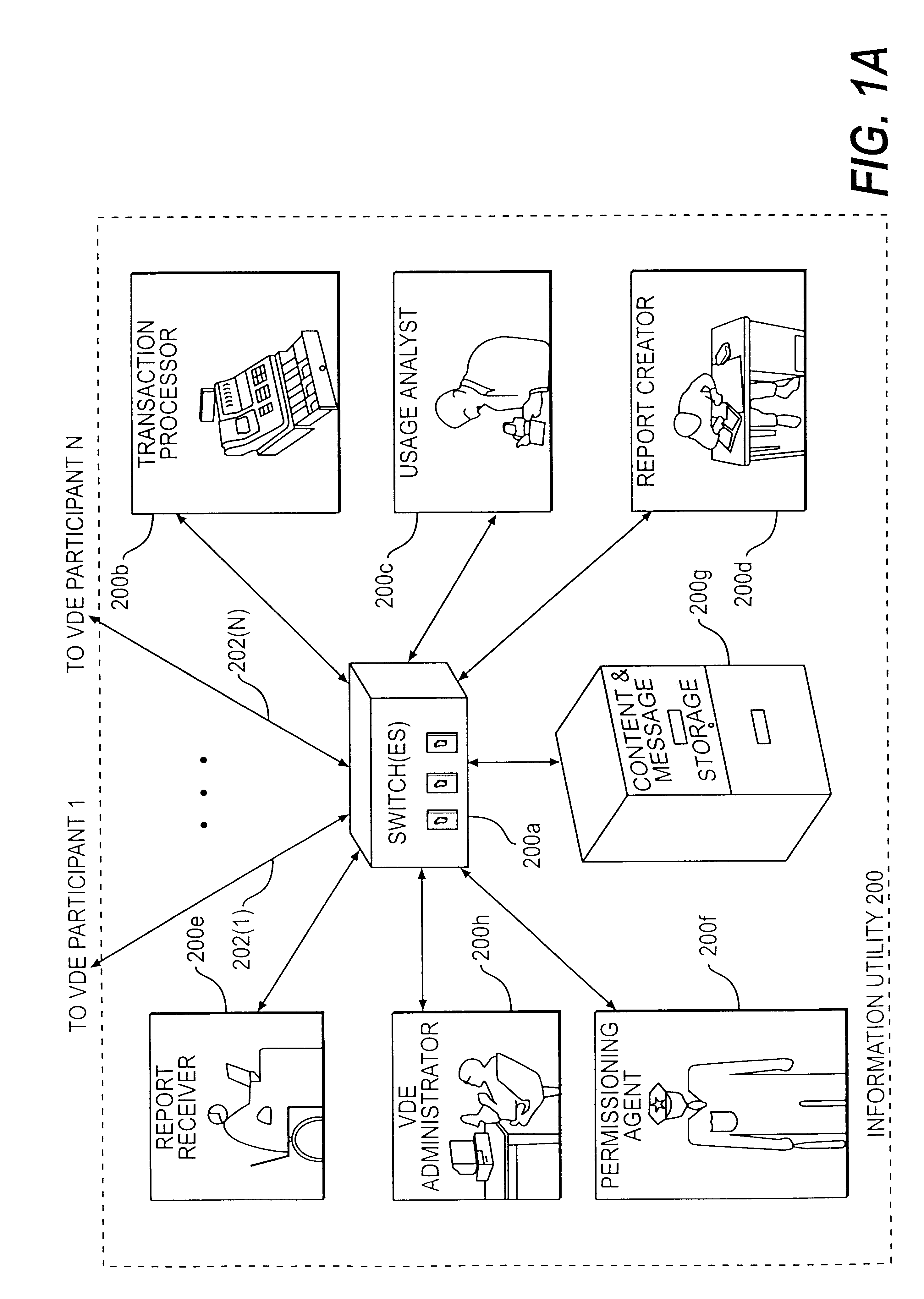Trusted and secure techniques, systems and methods for item delivery and execution
a trusted and secure technology, applied in the field of secure and trusted delivery of digital information, can solve the problems of affecting the degree of interactivity between the sender and the recipient, the trusted courier technique does not provide a reliable means of later, and the problem of deficient in important ways, so as to prevent deletion
- Summary
- Abstract
- Description
- Claims
- Application Information
AI Technical Summary
Benefits of technology
Problems solved by technology
Method used
Image
Examples
example electronic
Appliance
FIG. 109 shows an example detailed architecture for electronic appliance 600. In this example, appliance 600 may include one or more processors 4126 providing or supporting one or more "protected processing environments" (PPE) 650 (e.g., SPEs 503 and / or HPEs 544) shown in FIGS. 6-12 and 62-72). Protected processing environment 650 may, for example, be implemented using a secure processing unit (SPU) 500 of the type shown in FIG. 9 and / or may be based on software tamper-resistance techniques or a combination of software and hardware. As described above in detail, protected processing environment 650 provides a secure, trusted environment for storing, manipulating, executing, modifying and otherwise processing secure information such as that provided in secure electronic containers 302. In this particular example, secure containers 302 may not be opened except within a protected processing environment 650. Protected processing environment 650 is provided with the cryptographi...
example receive process
FIGS. 114A and 114B show an example process 4600 for receiving an item. In this example, electronic appliance 600 that has received an electronic object 300 may first generate a notification to PPE 650 that the container has arrived (FIG. 114A, block 4602). PPE 650 may, in response, use the dynamic user interaction techniques discussed above to interact with and authenticate the recipient in accordance with the electronic controls 4078 within the received object 300 (FIG. 114A block 4603; authentication routine shown in FIG. 111).
Intended recipient 4056 may be given an option of accepting or declining delivery of the object (FIG. 114A, block 4604). If intended recipient 4056 accepts the item, appliance may store the container 302 locally (FIG. 114A, block 4606) and then generate a "register object" event for processing by PPE 650.
FIG. 115 shows example steps that PPE 650 may perform in response to a "register object" event. In this particular example, PPE 650 may generate and send a...
example trusted
Electronic Go-Between Detailed Architecture and Operation
In addition to the secure archive, witnessing and transaction management functions discussed above, trusted electronic go-between 4700 may perform additional services, such as, for example:
notary services;
provide an electronic trading environment allowing multiple parties to electronically auction goods or services;
"clearing" transaction details, such as, payments, audit information and the like;
acting as a "certifying authority" (see Shear et al. patent disclosure) by issuing digital certificates 4064;
provide any or all of the various support and administrative services described in the Shear et al. patent disclosure;
act as a trusted registry for electronic control sets;
provide electronic or human arbitration, mediation or negotiation services to facilitate formation of agreements or electronic contracts;
provide legal, accounting, architectural, design or other professional services;
provide document assembly services;
provide ...
PUM
 Login to View More
Login to View More Abstract
Description
Claims
Application Information
 Login to View More
Login to View More - R&D
- Intellectual Property
- Life Sciences
- Materials
- Tech Scout
- Unparalleled Data Quality
- Higher Quality Content
- 60% Fewer Hallucinations
Browse by: Latest US Patents, China's latest patents, Technical Efficacy Thesaurus, Application Domain, Technology Topic, Popular Technical Reports.
© 2025 PatSnap. All rights reserved.Legal|Privacy policy|Modern Slavery Act Transparency Statement|Sitemap|About US| Contact US: help@patsnap.com



